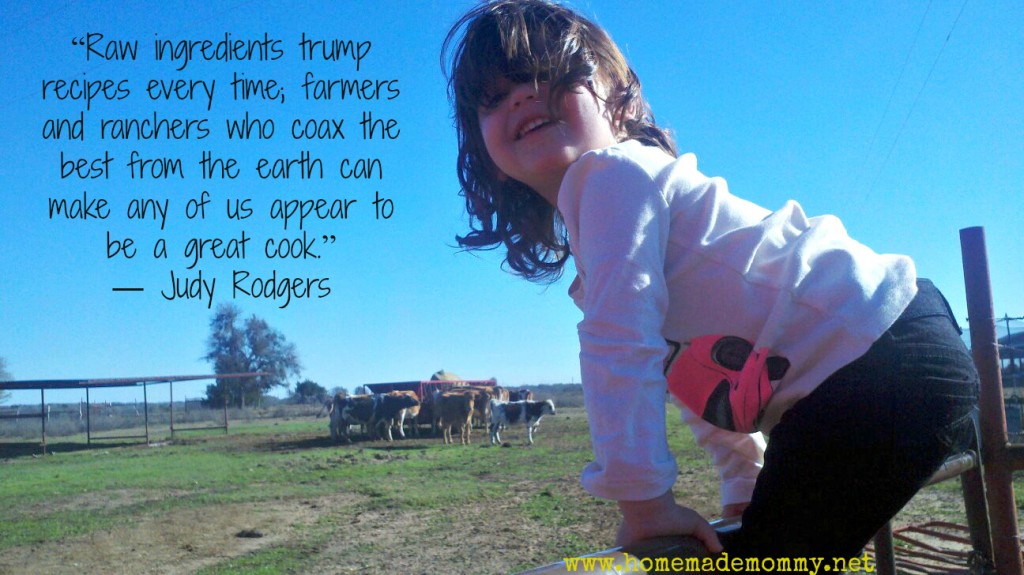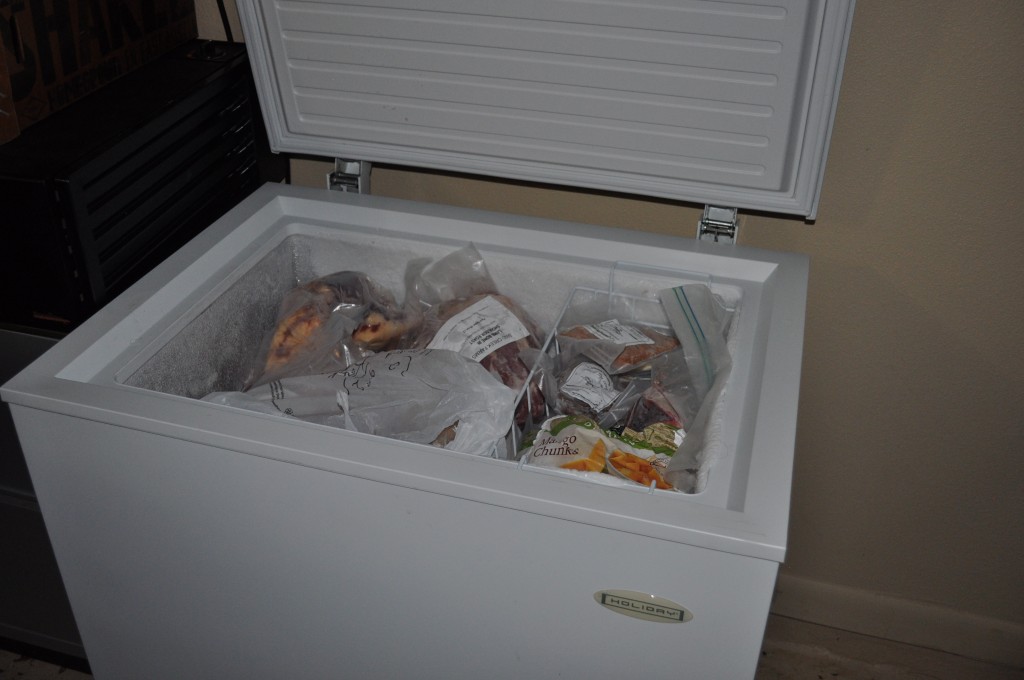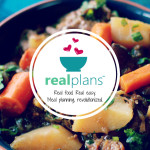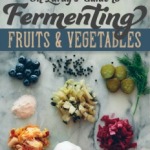If you follow the Homemade Mommy blog then you know that I am basically ingredient-driven. I like to have my ingredients on hand and that includes my meat. I buy my meat in bulk to save money but also to save time. As much as many real food bloggers talk about meal planning, this just isn’t something I do on a regular basis. I am mostly a last minute cook and I make things based on the time I have in any given work day. About 80% of the time, I wander into my garage, open the chest freezer, look inside, and decide what to make a few hours before dinner. Some days my meals turn out better than I thought and some days we wing it with breakfast for dinner. For this post I am going to focus on locally sourcing beef.
Buying half a cow
Because I am not a big meal planner, I also didn’t plan on buying half a cow last spring. Last November, our family started getting milk from a local dairy farm. When I signed up for this group, I thought I would only be buying milk and cheese which is exactly what I did for a few months.
To my surprise, I received a note from our dairy farmer this past spring that it was the annual cow butchering time and we could order a whole cow or a half a cow. I saw the prices and calculated it out and it sounded like a great deal. We had never done this before and I knew nothing about how to order a cow. So of course, I signed up! (You can see I am a bit impulsive.) As I got more emails from our lovely farmer’s wife about the details of the order, I noticed she kept calling it ‘rose beef’. I asked her what this was and she told me it was a young cow. I remember on my regular Saturday visit to my local Farmer’s Market asking my regular beef purveyor if he had ever heard of anyone selling young grass fed beef to which he replied, ‘that is going to be some tough meat!’ I thought to myself this was going to be an expensive mistake and I nearly cancelled my order. Before I did, it hit me, I had ordered veal. Veal – the most reviled of the meats. Veal – the meat we were all taught was evil and why many people I know became vegetarians.
Veal – bad or good?
But is veal bad or good? I travel internationally quite a bit for work and noticed that veal is quite popular oversees though we don’t see it available in US much anymore. However, I do see a lot of recipes for veal online and on cooking TV shows. I started to do some research. It turns out veal is quite popular with chefs and being a foodie this intrigued me. I focus on the quality of the ingredients and wanted to know why veal was so desirable. Was it because it was now hard to find? An article from back in 2007 in the New York Times addresses this topic. According to the article,
“In the 1950s and 1960s Americans ate four pounds of veal a year on average. Today per capital consumption is around half a pound a year.”
The article says boycotting veal was the most successful animal rights campaign starting 20 years ago. I remember this…the veal tethered in crates being force fed formula! Was I going to be buying this?!
Fortunately the article continues to say that farmers got the message and cleaned up their act and there are many producers of veal today that do it humanely. Turns out they are actually raising the veal on pasture where they eat a combination of their own mother’s milk and grass. Again according to the article,
“Those changes on the farm have led to corollary changes in the kitchen — a culinary serendipity that is just beginning to be recognized. Veal from calves fed sufficient grass or grain as well as milk has real character and flavor. For anyone who knows only the bland old-fashioned veal, it is as if a brand-new ingredient has been discovered. Tasting this new veal is not unlike biting into your first heirloom tomato from the garden after a lifetime of eating supermarket tomatoes bred for durability.
Even Stanley Lobel of the fine-meat purveyor Lobel’s of New York — where veal from crated formula-fed calves was once valued beyond all others because of its “cut it with a fork” tenderness — says the new veal is better. “Veal becomes more flavorful if it’s allowed to walk around,” he said.
Unlike the formula-fed veal — prized for its whiteness, which comes from a lack of iron — almost all grass- or grain-fed veal raised outside crates not only is rosy or pink, but has a delightfully clean, subtle beef taste. The names it is sold under reflect the changes: meadow, red, rose, pastured, grass-fed, free-range and suckled. Not all of it can be cut with a fork, but an ordinary dinner knife works fine.”
But was my dairy farm in the veal business?
Soon I had another epiphany. Dairy cows raised on small dairy farms (I am excluding factory farms here) are able to provide milk because they are having calves. Some of these calves are males and some are females. Many of the females are raised to maturity to breed and become dairy cows themselves. The males are a different story for obvious reasons. So while the small farm we just became a member of produces the milk and cheese and yogurt we buy, the bi-product is of course veal. So if you consume dairy, you are supporting the veal industry in some way shape or form!
I asked our farmer many questions about how the veal is raised and, in the end, I was more than satisfied with the answers. This is the circle of life and everything on a small farm serves its purpose. I find this comforting versus cruel. Veal isn’t that young compared to when chickens and pigs are slaughtered; 6 months versus 5-9 weeks for chickens and 22 weeks for pigs (source).
Additionally, I soon realized that the majority of meat my family will consume this year came from half of one cow. I am not sure how many people can say that. I have great respect for the cow that is providing us with our nourishment this year. I am using pretty much all of his gifts to us. I was given not only the ground, stew and lean muscle meat, but also the oxtail, bones, heart, liver, tongue and fat. I know exactly where my meat came from because I have been out to that farm and have seen it for myself.
So this is how we happened upon a half a young rose beef (aka veal) which set us on a course to enjoy the very best beef I have ever had the pleasure to cook. And if you ever have the opportunity to get your hands on some, I highly recommend it.

Check out Eat Wild as a resource to finding local farmers and ranchers in your area who raise grass fed beef.

Veal recipes to get you started
This slow cooker short ribs and oxtail recipe is easy and absolutely delicious!
These veal enchiladas are great with beans and rice. Just make sure the tortillas you get are white corn and not GMO.
I love these meatballs served over rice or a salad!
And last but not least – how to make beef bone broth. Veal broth is the most gelatinous of all of the stocks and is also mild in flavor. It can be used in place of chicken broth for any recipe.
This post is featured on Fat Tuesday,Teach me Tuesday, Real Food Wednesday, Simple Lives Thursday, Fill Those Jars Friday, Fight Back Friday, Small Footprint Friday, Farm Girl Blog Fest
















Hi, I’m Anne from Life on the Funny Farm (http://annesfunnyfarm.blogspot.com), and I’m visiting from Farmgirl Friday.
Wow, this is fascinating. I am going to pin this. I never heard of “rose beef” before, but like you said, it makes sense. Thanks!
Anyway, it’s nice to “meet” you! Hope you can pop by my blog sometime to say hi…